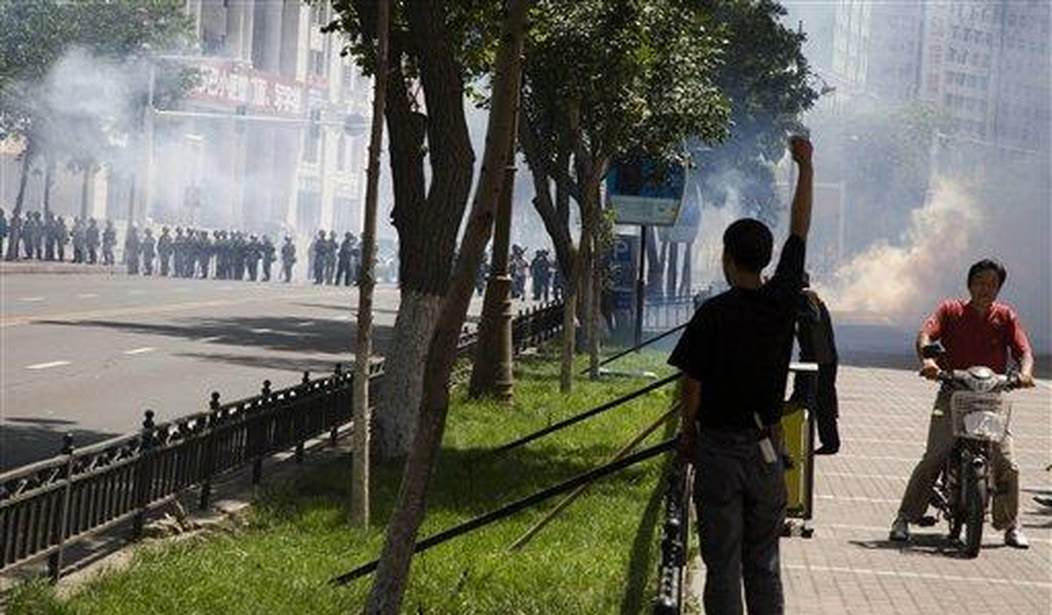Xinjiang, China, is an ongoing public relations disaster for the CCP.
Domestically — because of the iron grip on information that the government enjoys, the largely homogenous ethnic makeup (Han), and the lack of liberal values among the population — the genocidal war on the Uighur minority in Xinjiang isn’t a huge political problem beyond the logistical matters of managing and exploiting all that labor and how to count all the cash.
But, internationally, Xinjiang is a black eye.
Via Reuters:
China is forcing hundreds of thousands of ethnic Uighurs and other minorities to pick cotton by hand, a U.S. think-tank said, sparking calls for governments to ban all cotton imports from the Xinjiang region.
The vast western province, home to about 11 million ethnic Uighurs, produces 85% of China’s cotton and 20% of the global supply, which is used by fashion brands worldwide.
The Washington-based Center for Global Policy said in a report it was very likely a major share of cotton from Xinjiang was “tainted with forced labour”.
But on Chinese social media, when one searches “Xinjiang,” instead of a sea of slaves, it’s all pretty TikTok stars in flawless fields of crops.
Again, as Vice suggests in the documentary, this sort of insidious technology-driven propaganda appears to be directed internationally rather than domestically, specifically to save the industries operating in Xinjiang that are increasingly targeted for international sanctions.
Via Radio Free Asia:
The Chinese Communist Party (CCP) is using increasingly elaborate online tactics to counter information about human rights abuses in western China’s Xinjiang region in hopes of influencing audiences across the globe, according to a new report.
In response to criticism of its mistreatment of Uyghurs and other Turkic minorities in Xinjiang, the CCP has coordinated its state propaganda arms and security agencies in an effort to contradict and reframe narratives about the region, says the policy paper issued on July 20 by the Australian Strategic Policy Institute (ASPI). The Canberra-based independent, nonpartisan think tank provides defense, security and strategic policy recommendations to the Australian government.
It’s important to frame these propaganda efforts as part of the People’s Liberation Army’s overall strategy of “unrestricted warfare.”
Continuing via Radio Free Asia:
“Xi Jinping and the Communist Party view information operations as the domain of warfare as a battlefield to fight other people’s public opinion,” said Albert Zhang, an analyst with ASPI’s Cyber Policy Centre who wrote the report with researcher Tilla Hoja.
Per unrestricted warfare doctrine, anything that can be weaponized should be weaponized, no matter how mundane — even social media figures who create gardening content. If they have enough reach, they are potential information weapons per unrestricted warfare doctrine.
The aim of unrestricted warfare, particularly as it pertains to the United States vs. China, is to compensate for other military shortcomings such as imbalances in kinetic capabilities.
Lots of people hate him, but Alex Jones deserves credit for injecting awareness of “InfoWars” (information wars) into the zeitgeist.
Propaganda disseminated via TikTok may prove to be just as relevant to the rapidly developing cold war (and maybe a hot war in short order depending on how an American administration responds to a potential invasion of Taiwan by the CCP) between the Western liberal order and China.
The West, in general, is at a significant disadvantage in the information warfare domain because of the constraints on government control of information, such as those laid out in the United States Constitution’s First Amendment — diminishing though they may be. Censorship paradoxically, in my view, ultimately weakens a state’s stability in the long term by stemming the free exchange of ideas that drives innovation but in the short-term censorship can be an effective tool for narrative control.










